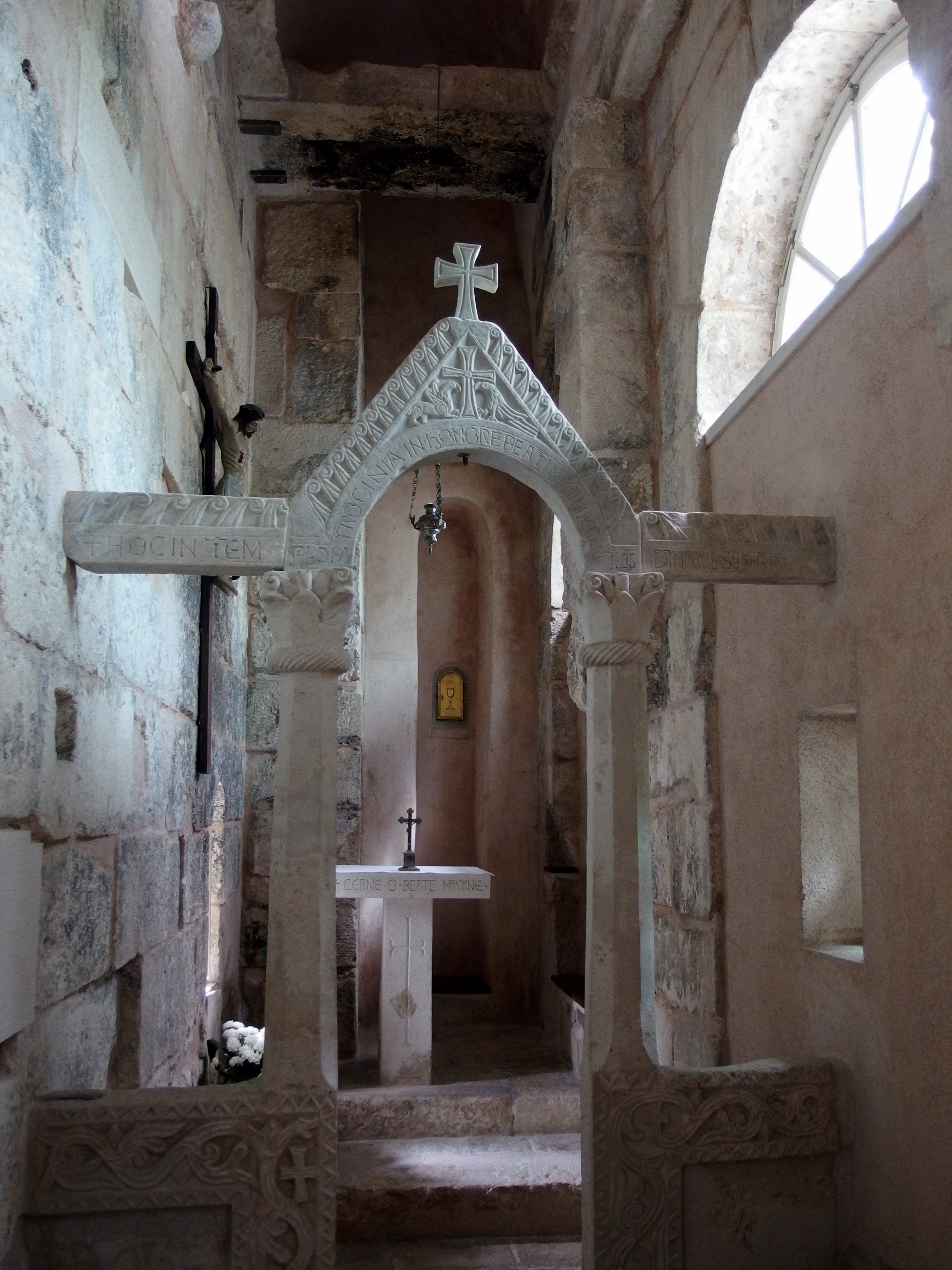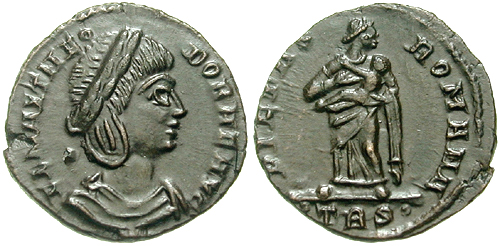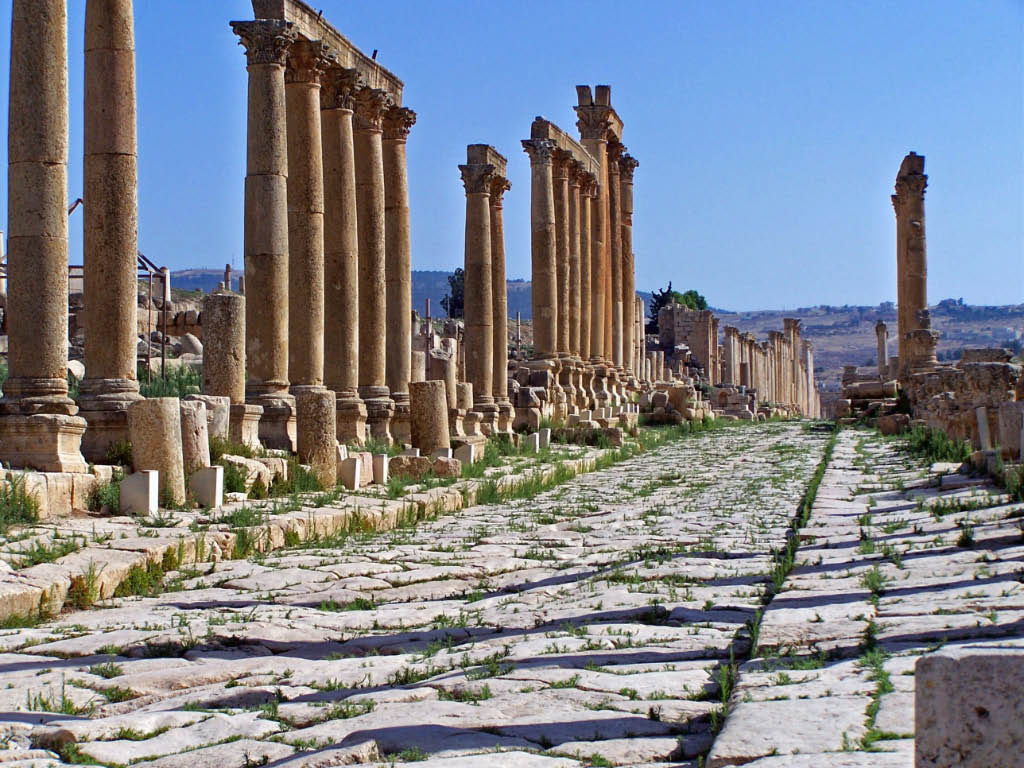|
Golden Gate (Diocletian's Palace)
The Golden Gate ( hr, Zlatna vrata, la, Porta Aurea), or "the Northern Gate", is one of the four principal Roman gates into the stari grad (old town) of Split. Built as part of Diocletian's Palace, it served as the main gate through which the Emperor entered the complex and was elaborately decorated to mark its status. Over the course of the Middle Ages, the gate was sealed off and lost its columns and statuary. It was reopened and repaired in modern times and now serves as a tourist attraction. History The gate stood at a terminal point of the road which led north towards Salona, Diocletian's birthplace and the capital of the Roman province of Dalmatia. It was probably used by Diocletian to enter the palace after his abdication from the imperial throne on 1 May 305. The Romans of late antiquity called the structure ''Porta Septemtrionalis'' ("Northern Gate"). In the Middle Ages, its name was changed to ''Porta Romae'' ("Roman Gate"); the name "Golden Gate" seems to date from the ... [...More Info...] [...Related Items...] OR: [Wikipedia] [Google] [Baidu] |
Split, Croatia
)'' , settlement_type = List of cities and towns in Croatia, City , anthem = ''Marjane, Marjane'' , image_skyline = , imagesize = 267px , image_caption = Top: Nighttime view of Split from Mosor; 2nd row: Cathedral of Saint Domnius; City center of Split; 3rd row: View of the city from Marjan, Split, Marjan Hill; Night in Poljička Street; Bottom: ''Riva'' waterfront , image_flag = Flag of the City of Split.svg , flag_size = 150px , flag_link = Flag of Split , image_seal = , seal_size = , image_shield = Coat of arms of Split.svg , shield_size = 90px , shield_link = Coat of arms of Split , image_map = , mapsize = , map_caption = Map of the Split city area. , image_map1 = , mapsize1 = , map_caption1 = ... [...More Info...] [...Related Items...] OR: [Wikipedia] [Google] [Baidu] |
Bell Tower
A bell tower is a tower that contains one or more bells, or that is designed to hold bells even if it has none. Such a tower commonly serves as part of a Christian church, and will contain church bells, but there are also many secular bell towers, often part of a municipal building, an educational establishment, or a tower built specifically to house a carillon. Church bell towers often incorporate clocks, and secular towers usually do, as a public service. The term campanile (, also , ), deriving from the Italian ''campanile'', which in turn derives from ''campana'', meaning "bell", is synonymous with ''bell tower''; though in English usage campanile tends to be used to refer to a free standing bell tower. A bell tower may also in some traditions be called a belfry, though this term may also refer specifically to the substructure that houses the bells and the ringers rather than the complete tower. The tallest free-standing bell tower in the world, high, is the Mortegliano B ... [...More Info...] [...Related Items...] OR: [Wikipedia] [Google] [Baidu] |
Corbels
In architecture, a corbel is a structural piece of stone, wood or metal jutting from a wall to carry a superincumbent weight, a type of bracket. A corbel is a solid piece of material in the wall, whereas a console is a piece applied to the structure. A piece of timber projecting in the same way was called a "tassel" or a "bragger" in England. The technique of corbelling, where rows of corbels deeply keyed inside a wall support a projecting wall or parapet, has been used since Neolithic (New Stone Age) times. It is common in medieval architecture and in the Scottish baronial style as well as in the vocabulary of classical architecture, such as the modillions of a Corinthian cornice. The corbel arch and corbel vault use the technique systematically to make openings in walls and to form ceilings. These are found in the early architecture of most cultures, from Eurasia to Pre-Columbian architecture. A console is more specifically an "S"-shaped scroll bracket in the classical t ... [...More Info...] [...Related Items...] OR: [Wikipedia] [Google] [Baidu] |
Blind Arcade
A blind arcade or blank arcade is an arcade (a series of arches) that has no actual openings and that is applied to the surface of a wall as a decorative element: i.e., the arches are not windows or openings but are part of the masonry face. It is designed as an ornamental architectural element and has no load-bearing function. Similar structures Whereas a blind arch is usually a single arch or a series of joined arches as a frieze (sometimes called Lombard band), a blind arcade is composed of a series of arches that have well-defined columns in between its arches. A blind arcade may resemble several s (false/blank windows or sealed-up windows) or blind niches that are side by side. Examples Blind arcades are a common decorative features on the facades of Romanesque and Gothic buildings throughout Western Europe, and are also a common feature in Byzantine Orthodox churches in Eastern Europe, and in Armenian churches. See also * Dwarf gallery * Flying butress Image:C ... [...More Info...] [...Related Items...] OR: [Wikipedia] [Google] [Baidu] |
Constantius Chlorus
Flavius Valerius Constantius "Chlorus" ( – 25 July 306), also called Constantius I, was Roman emperor from 305 to 306. He was one of the four original members of the Tetrarchy established by Diocletian, first serving as caesar from 293 to 305 and then ruling as augustus until his death. Constantius was also father of Constantine the Great, the first Christian emperor of Rome. The nickname Chlorus () was first popularized by Byzantine-era historians and not used during the emperor's lifetime. After his re-conquering of Roman Britain, he was given the title 'Redditor Lucis Aeternae', meaning 'The Restorer of Eternal Light'. Of humble origin, Constantius had a distinguished military career and rose to the top ranks of the army. Around 289 he set aside Helena, Constantine's mother, to marry a daughter of Emperor Maximian, and in 293 was added to the imperial college by Maximian's colleague, Diocletian. Assigned to rule Gaul, Constantius defeated the usurper Carausius there ... [...More Info...] [...Related Items...] OR: [Wikipedia] [Google] [Baidu] |
Galerius
Gaius Galerius Valerius Maximianus (; 258 – May 311) was Roman emperor from 305 to 311. During his reign he campaigned, aided by Diocletian, against the Sasanian Empire, sacking their capital Ctesiphon in 299. He also campaigned across the Danube against the Carpi, defeating them in 297 and 300. Although he was a staunch opponent of Christianity, Galerius ended the Diocletianic Persecution when he issued an Edict of Toleration in Serdica in 311. Early life Galerius was born near Serdica, in Dacia Ripensis, later named Dacia Mediterranea, though some modern scholars consider the strategic site where he later built his palace named after his mother – Felix Romuliana ( Gamzigrad) – his birth and funeral place.Barnes, ''New Empire'', p. 37. His father was a Thracian and his mother Romula had left Roman Dacia because of the Carpians' attacks. He originally followed his father's occupation, that of a herdsman, where he was nicknamed "Armentarius", herdsman ( la, armentum, lit= ... [...More Info...] [...Related Items...] OR: [Wikipedia] [Google] [Baidu] |
Maximian
Maximian ( la, Marcus Aurelius Valerius Maximianus; c. 250 – c. July 310), nicknamed ''Herculius'', was Roman emperor from 286 to 305. He was ''Caesar'' from 285 to 286, then ''Augustus'' from 286 to 305. He shared the latter title with his co-emperor and superior, Diocletian, whose political brain complemented Maximian's military brawn. Maximian established his residence at Trier but spent most of his time on campaign. In late 285, he suppressed rebels in Gaul known as the Bagaudae. From 285 to 288, he fought against Germanic tribes along the Rhine frontier. Together with Diocletian, he launched a scorched earth campaign deep into Alamannic territory in 288, refortifying the frontier. The man he appointed to police the Channel shores, Carausius, rebelled in 286, causing the secession of Britain and northwestern Gaul. Maximian failed to oust Carausius, and his invasion fleet was destroyed by storms in 289 or 290. Maximian's subordinate, Constantius, campaigned against Ca ... [...More Info...] [...Related Items...] OR: [Wikipedia] [Google] [Baidu] |
Tetrarchy
The Tetrarchy was the system instituted by Roman emperor Diocletian in 293 AD to govern the ancient Roman Empire by dividing it between two emperors, the '' augusti'', and their juniors colleagues and designated successors, the '' caesares''. This marked the end of the Crisis of the Third Century. Initially Diocletian chose Maximian as his ''caesar'' in 285, raising him to co-''augustus'' the following year; Maximian was to govern the western provinces and Diocletian would administer the eastern ones. The role of the ''augustus'' was likened to Jupiter, while his ''caesar'' was akin to Jupiter's son Hercules. Galerius and Constantius were appointed ''caesares'' in March 293. Diocletian and Maximian retired on 1 May 305, raising Galerius and Constantius to the rank of ''augustus''. Their places as ''caesares'' were in turn taken by Valerius Severus and Maximinus Daza. The orderly system of two senior and two junior rulers endured until Constantius died in July 306, and his ... [...More Info...] [...Related Items...] OR: [Wikipedia] [Google] [Baidu] |
20130603 Split 085
Thirteen or 13 may refer to: * 13 (number), the natural number following 12 and preceding 14 * One of the years 13 BC, AD 13, 1913, 2013 Music * 13AD (band), an Indian classic and hard rock band Albums * ''13'' (Black Sabbath album), 2013 * ''13'' (Blur album), 1999 * ''13'' (Borgeous album), 2016 * ''13'' (Brian Setzer album), 2006 * ''13'' (Die Ärzte album), 1998 * ''13'' (The Doors album), 1970 * ''13'' (Havoc album), 2013 * ''13'' (HLAH album), 1993 * ''13'' (Indochine album), 2017 * ''13'' (Marta Savić album), 2011 * ''13'' (Norman Westberg album), 2015 * ''13'' (Ozark Mountain Daredevils album), 1997 * ''13'' (Six Feet Under album), 2005 * ''13'' (Suicidal Tendencies album), 2013 * ''13'' (Solace album), 2003 * ''13'' (Second Coming album), 2003 * ''13'' (Ces Cru EP), 2012 * ''13'' (Denzel Curry EP), 2017 * ''Thirteen'' (CJ & The Satellites album), 2007 * ''Thirteen'' (Emmylou Harris album), 1986 * ''Thirteen'' (Harem Scarem album), 2014 * ''Thirtee ... [...More Info...] [...Related Items...] OR: [Wikipedia] [Google] [Baidu] |
Cardo
A cardo (plural ''cardines'') was a north–south street in Ancient Roman cities and military camps as an integral component of city planning. The cardo maximus, or most often the ''cardo'', was the main or central north–south-oriented street. Etymology The ''cardo maximus'' was the "hinge" or axis of the city, derived from Greek καρδίᾱ, kardia ("heart") and as such was generally lined with shops and vendors, and served as a hub of economic life. Most Roman cities also had a Decumanus Maximus, an east–west street that served as a secondary main street. Due to varying geography, in some cities the Decumanus is the main street and the Cardo is secondary, but in general the Cardo maximus served as the primary street. The Forum was normally located at, or close to, the intersection of the Decumanus and the Cardo. Examples Apamea, Syria The Cardo Maximus of Apamea, Syria ran through the centre of the city directly from North to South, linked the principal gates of t ... [...More Info...] [...Related Items...] OR: [Wikipedia] [Google] [Baidu] |
Portcullis
A portcullis (from Old French ''porte coleice'', "sliding gate") is a heavy vertically-closing gate typically found in medieval fortifications, consisting of a latticed grille made of wood, metal, or a combination of the two, which slides down grooves inset within each jamb of the gateway. Usage Portcullises fortified the entrances to many medieval castles, securely closing off the castle during time of attack or siege. Every portcullis was mounted in vertical grooves in the walls of the castle and could be raised or lowered quickly by means of chains or ropes attached to an internal winch. Portcullises had an advantage over gates in that they could be closed immediately at a time of crisis by a single guard. Often, two portcullises to the main entrance would be used. The one closer to the inside would be closed first, and then the one farther away. This was used to trap the enemy, and often, burning wood or fire-heated sand would be dropped onto them from the roof or murder-h ... [...More Info...] [...Related Items...] OR: [Wikipedia] [Google] [Baidu] |

.jpg)

_-_Foto_G._Dall'Orto_28-5-2006.jpg)



